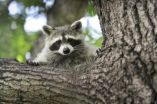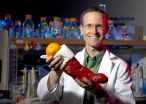(Press-News.org) A new study on biological invasions based on extensive data of alien species from 10 taxonomic groups and 28 European countries has shown that patterns of established alien species richness are more related to historical levels of socio-economic drivers than to contemporary ones. An international group of 16 researchers reported the new finding this week in the Proceedings of the National Academy of Sciences of the United States of America (PNAS). The publication resulted from the three-year project DAISIE (Delivering Alien Invasive Inventory for Europe, www.europe-aliens.org), funded by European Union within its 6th Framework Programme.
Recent research has demonstrated that economic activities are among the most important determinants of biological invasions, fostering discussions about appropriate political strategies to prevent unintended introductions, e.g. in terms of trade regulations. Yet the frequent delay between first introduction of a species in a new territory and its establishment and spread suggest that invasions triggered by current economic behavior will possibly take a long time to become fully realized, causing what the researchers call an "invasion debt".
Taking an historical approach, this new study provides an explicit test of this phenomenon. The researchers selected three predictors of socio-economic activity linked to invasions - human population density, per capita GDP, and, as a measure of trade intensity (i.e. openness of an economy) the share of exports in GDP, and demonstrated that current alien species richness is better explained by socio-economic data from 1900 than from 2000. The strength of the historical signal varies among taxonomic groups with those possessing good capabilities for dispersal (birds, insects) more strongly associated with recent levels of socioeconomic drivers. Nevertheless, the results suggest a considerable historical legacy for the majority of the species groups analyzed.
"The broad taxonomic and geographic coverage indicates that such an 'invasion debt' is a widespread phenomenon", says Franz Essl from the Austrian Environment Agency. "This inertia is worrying as it implies that current, increased levels of socio-economic activity will probably lead to continuously rising levels of invasion during the upcoming decades, even if new introductions could be successfully reduced", explains Stefan Dullinger from the University of Vienna.
Therefore, the scientists write "…the seeds of future invasion problems have already been sown" and they expect the problem of invasive species to become worse in the next few decades. They say that efforts to control invasive species should be expanded with a special focus on not only those species currently most harmful, but also on early warning and rapid response for species already in the territory that are likely to pose the greatest future threat.
INFORMATION:
Contacts:
Dr. Stefan Dullinger, University of Vienna, Austria and Vienna Institute for Nature Conservation Analysis
e-mail stefan.dullinger@univie.ac.at, telephone 0043-1-4277-54379, fax 0043-1-4277-9575
Dr. Franz Essl, Environment Agency Austria, Austria
e-mail franz.essl@umweltbundesamt.at, telephone: 0043-1-31304-3323, fax 0043-1-31304-3533
Essl F, Dullinger S, Rabitsch W, Hulme P.E., Hülber K, Jarošík V, Kleinbauer I, Krausmann F, Kühn I, Nentwig W, Vilà M, Genovesi P, Gherardi F, Desprez-Loustau ML, Roques A & Pyšek P (2010): Socioeconomic legacy yields an invasion debt. – Proceedings of the National Academy of Sciences of the United States of America (PNAS), published online early on December 20, 2010, http://www.pnas.org/cgi/doi/10.1073/pnas.1011728108 (available from 20. Dezember 2010)
Globalization burdens future generations with biological invasions
2010-12-21
ELSE PRESS RELEASES FROM THIS DATE:
New report finds Cambodia's HIV/AIDS fight at critical crossroads in funding, prevention
2010-12-21
Phnom Penh, Cambodia (21 December, 2010) – Despite Cambodia's remarkable history in driving down HIV infections, a report released today on the future of AIDS in the country argues that future success is not guaranteed and the government needs to focus increasingly on wise prevention tactics and assume more of the financing of its AIDS program.
The report, called The Long-Run Costs and Financing of HIV/AIDS in Cambodia, written by Cambodian experts working closely with staff of the Results for Development Institute (R4D), based in Washington, D.C., finds that Cambodia, ...
How often do giant black holes become hyperactive?
2010-12-21
A new study from NASA's Chandra X-ray Observatory tells scientists how often the biggest black holes have been active over the last few billion years. This discovery clarifies how supermassive black holes grow and could have implications for how the giant black hole at the center of the Milky Way will behave in the future.
Most galaxies, including our own, are thought to contain supermassive black holes at their centers, with masses ranging from millions to billions of times the mass of the Sun. For reasons not entirely understood, astronomers have found that these ...
New study upends thinking about how liver disease develops
2010-12-21
In the latest of a series of related papers, researchers at the University of California, San Diego School of Medicine, with colleagues in Austria and elsewhere, present a new and more definitive explanation of how fibrotic cells form, multiply and eventually destroy the human liver, resulting in cirrhosis. In doing so, the findings upend the standing of a long-presumed marker for multiple fibrotic diseases and reveal the existence of a previously unknown kind of inflammatory white blood cell.
The results are published in this week's early online edition of the Proceedings ...
UCSB scientists demonstrate biomagnification of nanomaterials in simple food chain
2010-12-21
(Santa Barbara, Calif.) –– An interdisciplinary team of researchers at UC Santa Barbara has produced a groundbreaking study of how nanoparticles are able to biomagnify in a simple microbial food chain.
"This was a simple scientific curiosity," said Patricia Holden, professor in UCSB's Bren School of Environmental Science & Management and the corresponding author of the study, published in an early online edition of the journal Nature Nanotechnology. "But it is also of great importance to this new field of looking at the interface of nanotechnology and the environment."
Holden's ...
New imaging advance illuminates immune response in breathing lung
2010-12-21
Fast-moving objects create blurry images in photography, and the same challenge exists when scientists observe cellular interactions within tissues constantly in motion, such as the breathing lung. In a recent UCSF-led study in mice, researchers developed a method to stabilize living lung tissue for imaging without disrupting the normal function of the organ. The method allowed the team to observe, for the first time, both the live interaction of living cells in the context of their environment and the unfolding of events in the immune response to lung injury.
The finding ...
Strange new twist: Berkeley researchers discover Möbius symmetry in metamaterials
2010-12-21
Möbius symmetry, the topological phenomenon that yields a
half-twisted strip with two surfaces but only one side, has been a source of fascination since its discovery in 1858 by German mathematician August Möbius. As artist M.C. Escher so vividly demonstrated in his "parade of ants," it is possible to traverse the "inside" and "outside" surfaces of a Möbius strip without crossing over an edge. For years, scientists have been searching for an example of Möbius symmetry in natural materials without any success. Now a team of scientists has discovered Möbius symmetry in ...
New study examines immunity in emerging species of a major mosquito carrer of malaria
2010-12-21
In notable back-to-back papers appearing in the prestigioous journal Science in October, teams of researchers, one led by Nora Besansky, a professor of biological sciences and a member of the Eck Institute for Global Health at the University of Notre Dame, provided evidence that Anopheles gambiae, which is one of the major mosquito carriers of the malaria parasite in Sub-Saharan Africa, is evolving into two separate species with different traits.
Another significant study appearing in this week's edition of the Proceedings of the National Academy of Sciences (PNAS) and ...
New study focuses on nitrogen in waterways as cause of nitrous oxide in the atmosphere
2010-12-21
Jake Beaulieu, a postdoctoral researcher the Environmental Protection Agency in Cincinnati, Ohio, who earned his doctorate at the University of Notre Dame, and Jennifer Tank, Galla Professor of Biological Sciences at the University, are lead authors of new paper demonstrating that streams and rivers receiving nitrogen inputs from urban and agricultural land uses are a significant source of nitrous oxide to the atmosphere.
Nitrous oxide is a potent greenhouse gas that contributes to climate change and the loss of the protective ozone layer. Nitrogen loading to river networks ...
The orange in your stocking: researchers squeezing out maximum health benefits
2010-12-21
VIDEO:
BYU nutritionist Tory Parker talks about his study into why oranges are so good for you.
Click here for more information.
Provo, Utah - In time for Christmas, BYU nutritionists are squeezing all the healthy compounds out of oranges to find just the right mixture responsible for their age-old health benefits.
The popular stocking stuffer is known for its vitamin C and blood-protecting antioxidants, but researchers wanted to learn why a whole orange is better for ...
Link between depression and inflammatory response found in mice
2010-12-21
Vanderbilt University researchers may have found a clue to the blues that can come with the flu – depression may be triggered by the same mechanisms that enable the immune system to respond to infection.
In a study in the December issue of Neuropsychopharmacology, Chong-Bin Zhu, M.D., Ph.D., Randy Blakely, Ph.D., William Hewlett, M.D., Ph.D., and colleagues activated the immune system in mice to produce "despair-like" behavior that has similarities to depression in humans.
"Many people exhibit signs of lethargy and depressed mood during flu-like illnesses," said Blakely, ...





